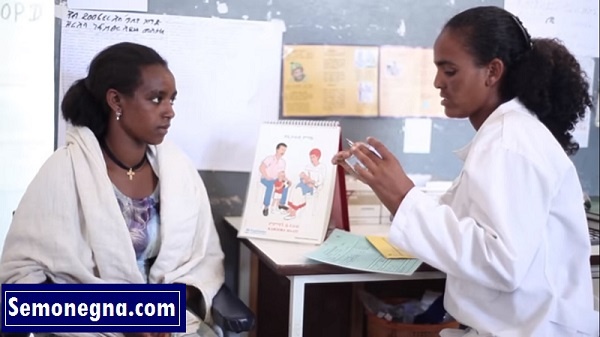
Ethiopia’s Second Generation Health Extension Program (HEP)
Background:
With the goal of making basic primary health care services accessible to the rural community, the Ethiopian government launched the health extension program (HEP) in the agrarian areas beginning in 2003. Based on lessons from the successful implementation of the agrarian health extension program, the HEP has expanded to urban and pastoral areas.
The HEP is intended to transfer ownership and responsibility of maintaining health to individual households so that communities are empowered to produce their own health. The focus of HEP is disease prevention and health promotion, with limited curative care. It is the healthcare service delivery mechanism of the people, by the people, and for the people by involving the community in the whole process of healthcare delivery and by encouraging them to maintain their own health. The program involves women in decision-making processes and promotes community ownership, empowerment, autonomy and self-reliance.
Ethiopia has come a long way in improving the health status of its people as evidenced by the achievement of most health related Millennium Development Goals (MDGs). The progress has been rapid after the inception of the HEP.
Rationale:
As literacy and socioeconomic status improves, the demand for quality service is also increasing. Besides, changes in the demographic trends, epidemiology and mushrooming urbanization require more comprehensive services covering a wide range and quality of curative, promotive and preventive services. To respond to the rapidly changing situations, the Government is currently revisiting the HEP. As addressing equity and quality of health services are the main focuses of the new Ethiopian Health Sector Transformation Plan (HSTP), most basic services will be shifted and responsibility will be shared to the community level structures. Therefore, improving the competence of health extension workers (HEWs) and the Women’s Development Army (WDA) is crucial.
Components of the second generation HEP:
The components of the health extension program varies based on where it is implemented. The second generation rural HEP will include: upgrading HEWs to level four Community Health Nurses, renovation and expansion of health posts, equipping and supplying health posts with the necessary equipment and supplies, shifting basic services to the community level and institutionalizing the WDA platform.
In cities and urban areas, the Family Health Team (FHT) approach will be introduced. The FHT approach will be comprised of multiple professionals who will address the complex situation and health problems of urban settings. The FHT will be composed of clinicians, public health professionals, environmental technicians, other health professional, social workers and health extension professionals to provide services for urban dwellers which have unique types of health needs. The community/household level health services will be geared towards the neediest segment of the population – the urban poor, and those otherwise unreached to address inequalities in accessing quality health care.
The third type of HEP will be the pastoralist HEP. Considering the varied nature of the community residing in the pastoralist and developing regions, the Ministry of Health, along with the Regional Health Bureaus is committed to developing a unique strategy to address pastoralist communities’ health issues.
Anticipated challenges:
The challenges in the urban and rural areas might be similar in many of cases, but will likely have some unique challenges. To mention some, in urban areas, medical doctors are expected to be part of the FHT, but the number of doctors might not be sufficient to fill all FHTs with Medical Doctors. In addition, the information system and community based Insurance requires expedited implementation to respond to the needs of the FHT. On the other hand, as the scope of practice of the health extension workers in the rural areas expands, it requires equipment and appropriate space which demand additional resources to meet the standard. Hence, the Ministry of Health (MoH) is working with regions to mobilize resources, using the existing human resources, and phase by phase introduction of the new health extension packages.
Conclusion:
To summarize, the government of Ethiopia has devised and implemented strategies to strengthen community health system to be more inclusive, resilient and organized. Furthermore, similar to the first generation of the HEP, engaging communities to take part in all program cycles – planning, implementation, monitoring and evaluation processes, will continue to be a priority.
Source: JSI
